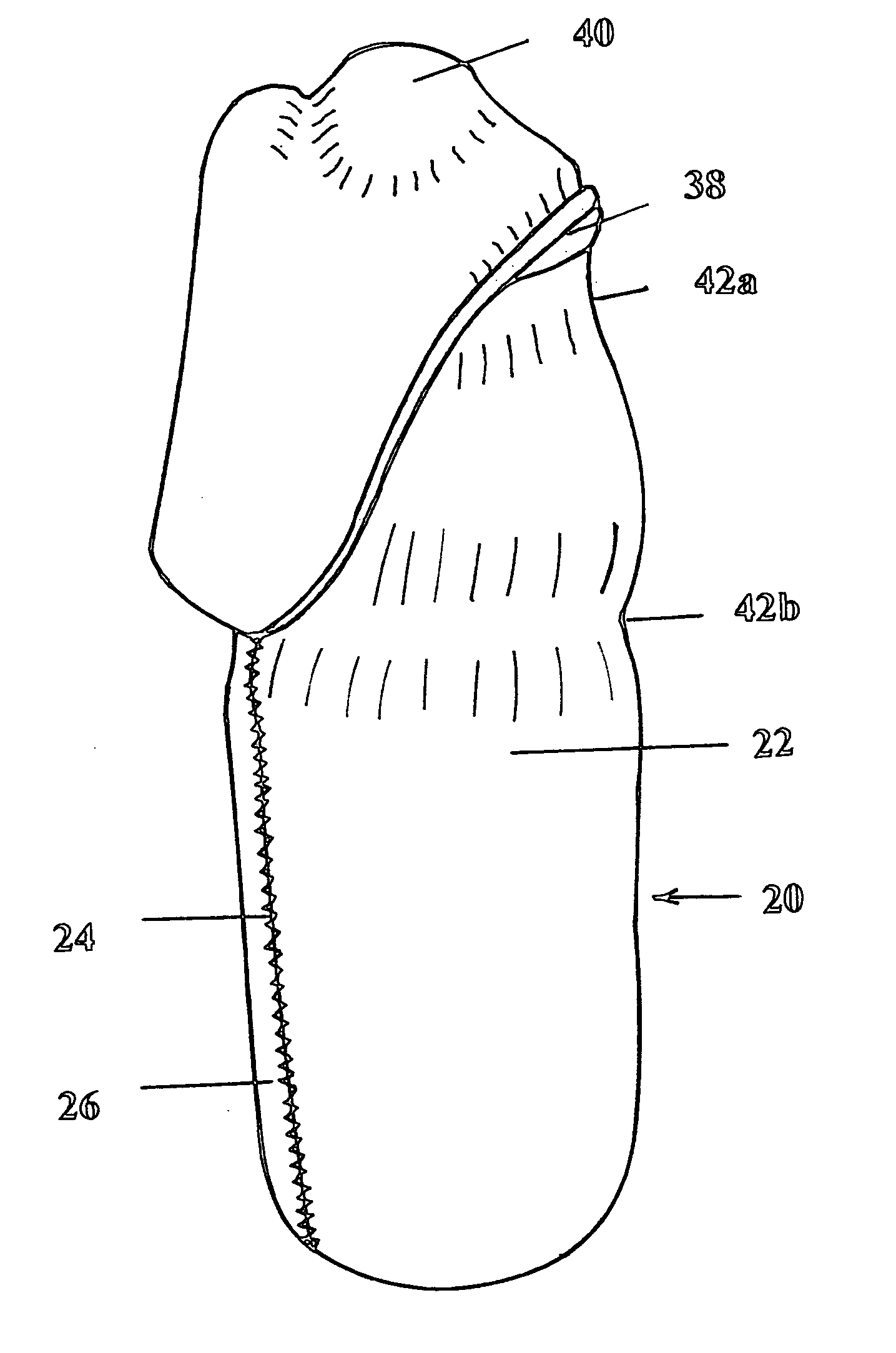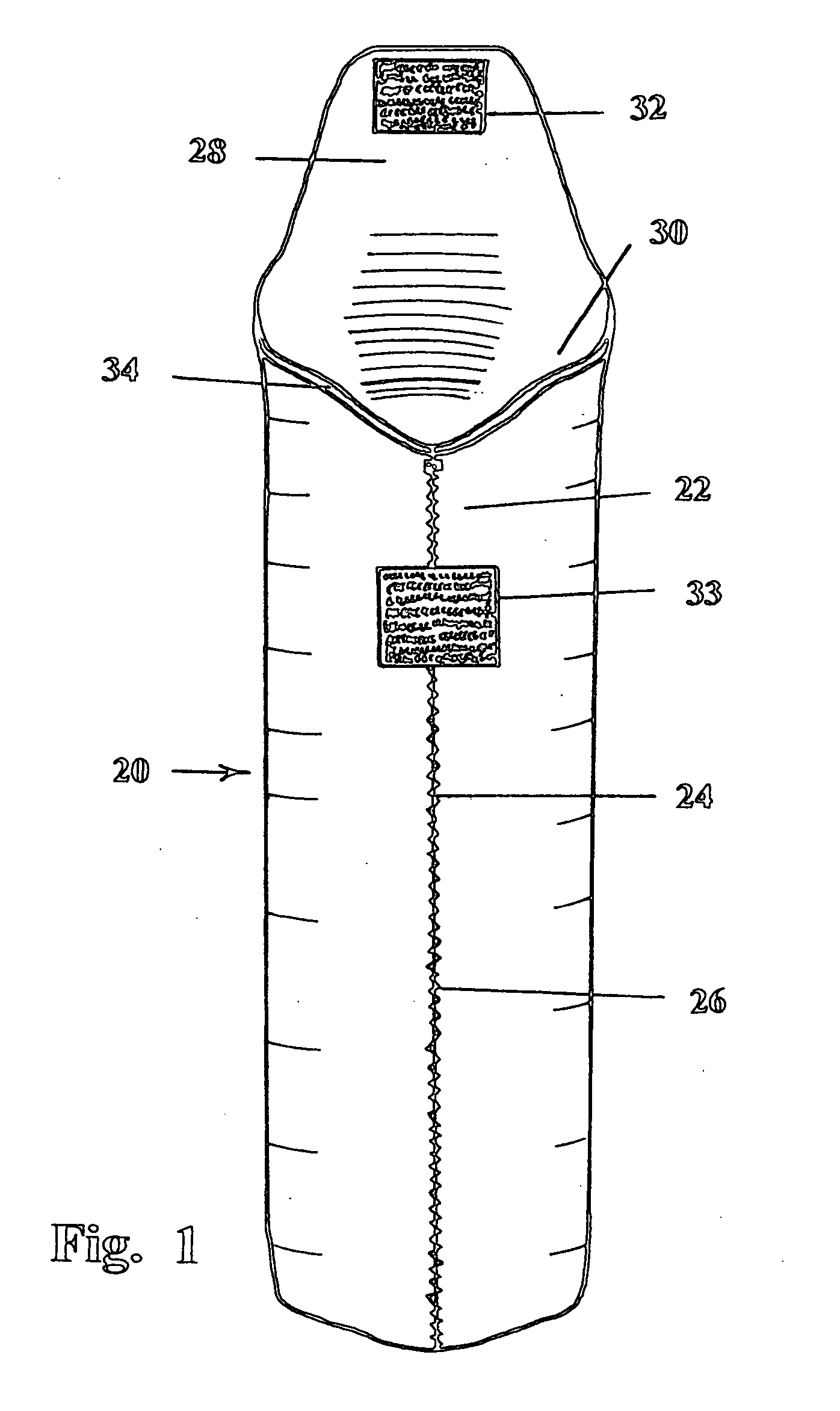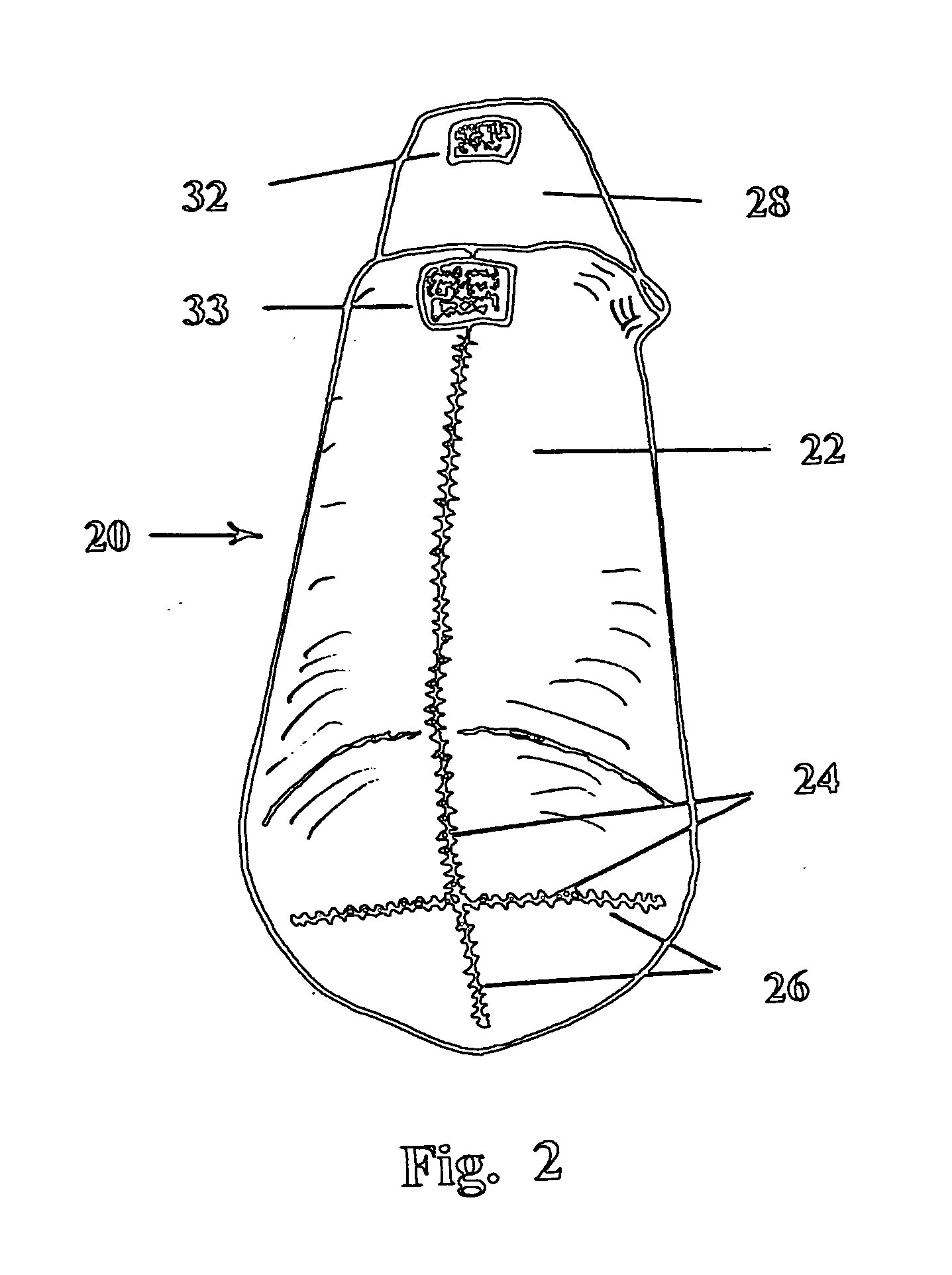Multi-purpose insulating and protective cover for containers
a multi-purpose, protective cover technology, applied in the field of insulators, can solve the problems of liquid inside the container that is easy to get hot or cold, the bottle of the athlete's favorite bottle usually does not fit, and the container is usually not insulated
- Summary
- Abstract
- Description
- Claims
- Application Information
AI Technical Summary
Benefits of technology
Problems solved by technology
Method used
Image
Examples
second embodiment
[0057] In the cover, FIG. 8 reveals an insulated cover pocket 48 on the front side of cover 20 with the pocket flap 50 in the closed and sealed position. The material for this pocket 48 and flap 50 is of the same type of waterproof material used for the cover 20, as this embodiment will be used mainly by runners. When running long distances runners keep necessities such as energy pills and powders that must not get wet in pockets and pouches of this type. A fastening means such as stitching 56 attaches the pocket 48 to the cover 20. In the same embodiment FIG. 9 shows the pocket flap 50 in the open position. A fastening means such as stitching 57 attaches the flap 50 to the cover 20. The preferred method of stitching 57 the pocket flap 50 to the cover 20 is from the inside of the flap 50 as shown. By this method, the pocket flap 50 will naturally stay open while one is retrieving the contents of the pocket 48 and will not fall down and be resealed before desired. The fastening means...
third embodiment
[0059] The third embodiment FIG. 11 shows various carrying means for the cover 20 and its contents. These carrying means or attachments fit a cover 20 containing virtually any sized container. The single indention 60 of the cover denotes a smaller sports bottle is contained within the cover. A strapping material 62 with a loop at each end is attached to the cover 20 at both ends of the strapping 62 by means of stitching 64. The loops' purpose is for attachment of a keeper 66, which is preferably a D-ring, but could be an O-ring, triangle, DR or other suitable attachment means. A clip 68 can be attached to the keeper 66 at one end of the strapping 62 or both. An adjustable carrying mechanism 70, such as a strap with keepers 66 and clips 68 can be attached to the cover 20. The clip 68 may be a standard snap hook, swivel hook, retainer, bolt snap, carabiner or any other similar retention mechanism. An adjustment device 72 such as a slide, cam buckle, straplock or loop may be used to ad...
PUM
 Login to View More
Login to View More Abstract
Description
Claims
Application Information
 Login to View More
Login to View More - R&D
- Intellectual Property
- Life Sciences
- Materials
- Tech Scout
- Unparalleled Data Quality
- Higher Quality Content
- 60% Fewer Hallucinations
Browse by: Latest US Patents, China's latest patents, Technical Efficacy Thesaurus, Application Domain, Technology Topic, Popular Technical Reports.
© 2025 PatSnap. All rights reserved.Legal|Privacy policy|Modern Slavery Act Transparency Statement|Sitemap|About US| Contact US: help@patsnap.com



